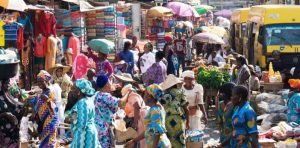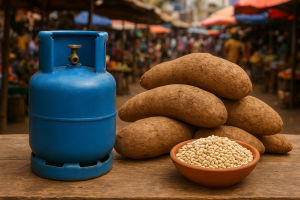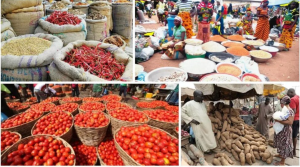Africa has emerged as a significant progress hub for Chinese language exports, with Nigeria, South Africa, and Egypt main the demand surge that has reshaped Beijing’s commerce outlook amid U.S. tariffs.
Bloomberg studies that Chinese language exports to Africa jumped 25% year-on-year to succeed in $122 billion thus far in 2025, already surpassing the continent’s total 2020 commerce quantity with China and on track to high $200 billion for the primary time.
China emerged as Nigeria’s largest sources of imports within the first quarter of 2025, displaying a big focus of imports from a handful of worldwide economies.
The Nationwide Bureau of Statistics (NBS) knowledge reveals the main international locations of origin for items and companies imported into Nigeria throughout this era.
The Chinese language exported N4.66 trillion to Nigeria through the interval.
The information exhibits that that is down from N14.14 trillion the nation did in This autumn 2024. Its present Share of Complete Imports stood at 30.19%.
What China Is Exporting to Africa
Building equipment ranked amongst China’s fastest-growing exports to Africa within the first seven months of 2025, surging 63% year-on-year. In keeping with Bloomberg. Shipments of passenger vehicles greater than doubled, whereas metal product exports rose in excessive double digits. African nations have additionally stepped-up imports of Chinese language photo voltaic panels, which climbed 60% within the 12 months by June, in accordance with local weather assume tank Ember.
Regardless of these positive factors, Africa’s share of China’s complete exports stays modest at about 6%, roughly half the extent for america.
US-China commerce stress fueling shift
The shift is being fueled by the escalating U.S.–China commerce warfare, which has pushed Chinese language corporations to hunt new shops for his or her items.
President Xi Jinping’s Belt and Street Initiative (BRI), launched in 2013, has laid the muse for this increase, as Chinese language corporations proceed successful contracts for large-scale tasks throughout the continent.
Shipments of passenger vehicles greater than doubled from a 12 months earlier and a few metal merchandise expanded in excessive double digits. On the identical time, Africa’s share of China’s complete exports stays modest at about 6%, roughly half the extent for the US.
Some items destined for the US are presumably being diverted by Africa, in accordance with Gavekal’s Beddor, a tactic often called transshipment.
Rising protectionism in Washington has given further incentive for Africa to purchase from Beijing. Plenty of items from greater than 30 nations on the continent that had duty-free entry to American markets granted underneath the African Development and Alternative Act at the moment are being subjected to a variety of tariffs by the Trump administration.
Within the first half of 2025 alone, Africa inked $30.5 billion in development contracts with China, in accordance with a July report from Griffith College in Australia and the Inexperienced Finance & Improvement Middle, based at Shanghai-based Fudan College. That’s 5 instances the quantity throughout the identical interval final 12 months and probably the most amongst all areas included in Xi’s infrastructure initiative, in accordance with Bloomberg.
And in a counterpoint to Trump, Xi stated in June that China is eradicating levies on imports from all African nations with which it has diplomatic ties.
Throughout the identical month, the federal government in Beijing allowed imports of agricultural merchandise from Ethiopia, Congo, Gambia, and Malawi, bringing to 19 the variety of African international locations with entry to China’s market.
In Africa, China may deliver know-how and its huge industrial machine to a continent battling expensive logistics and held again by its patchy infrastructure, with lower than half of the inhabitants having dependable electrical energy entry.
African nations have been ordering extra photo voltaic panels from China, with imports of the clean-energy expertise surging 60% within the 12 months by June, in accordance with local weather assume tank Ember.
What you need to know
This rising development means that Africa is more and more tilting in direction of Japanese markets, notably China and India, in its commerce relations.
This shift may very well be attributed to a number of components, together with aggressive pricing, availability of shopper items, versatile credit score amenities, and geopolitical concerns.






Be First to Comment